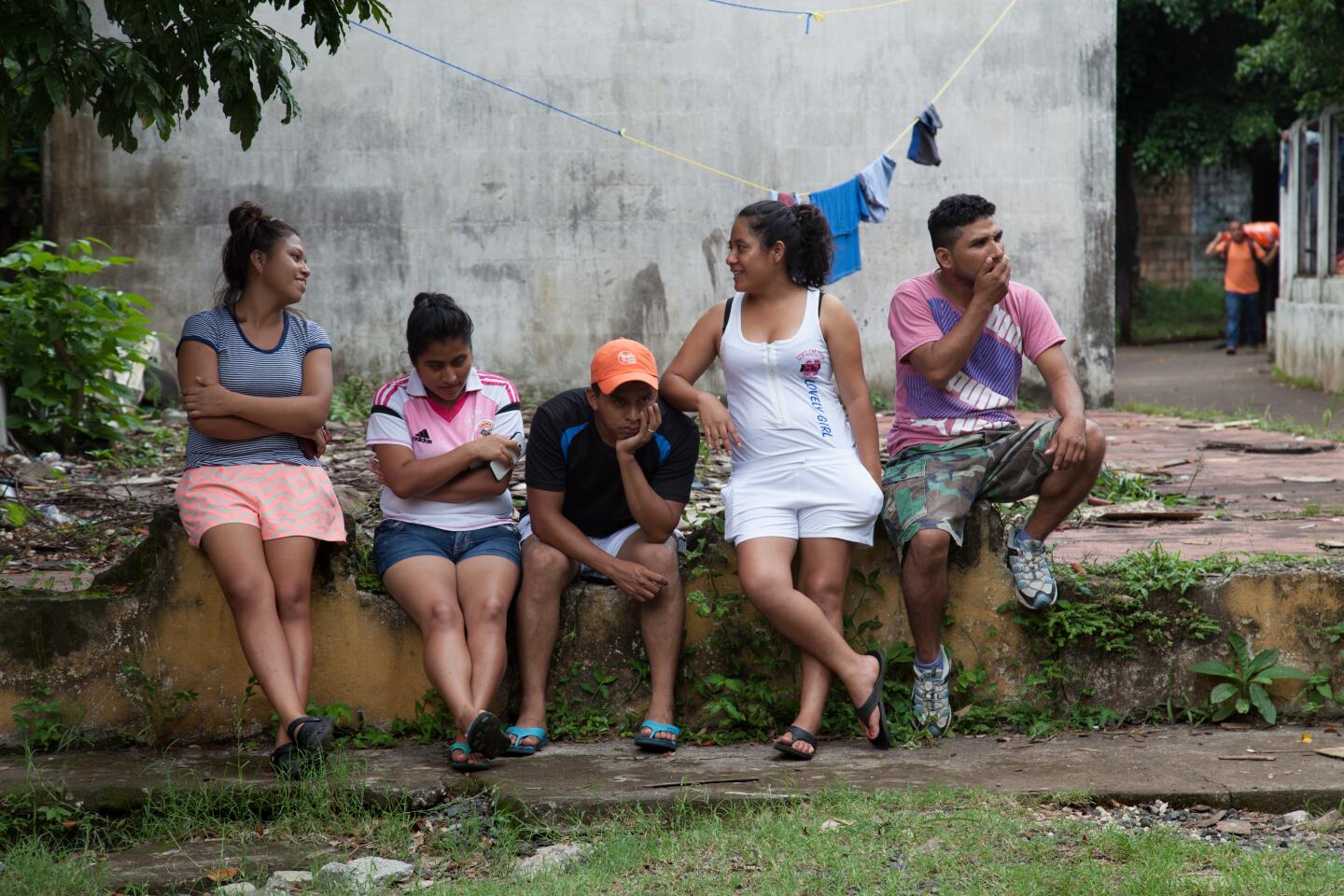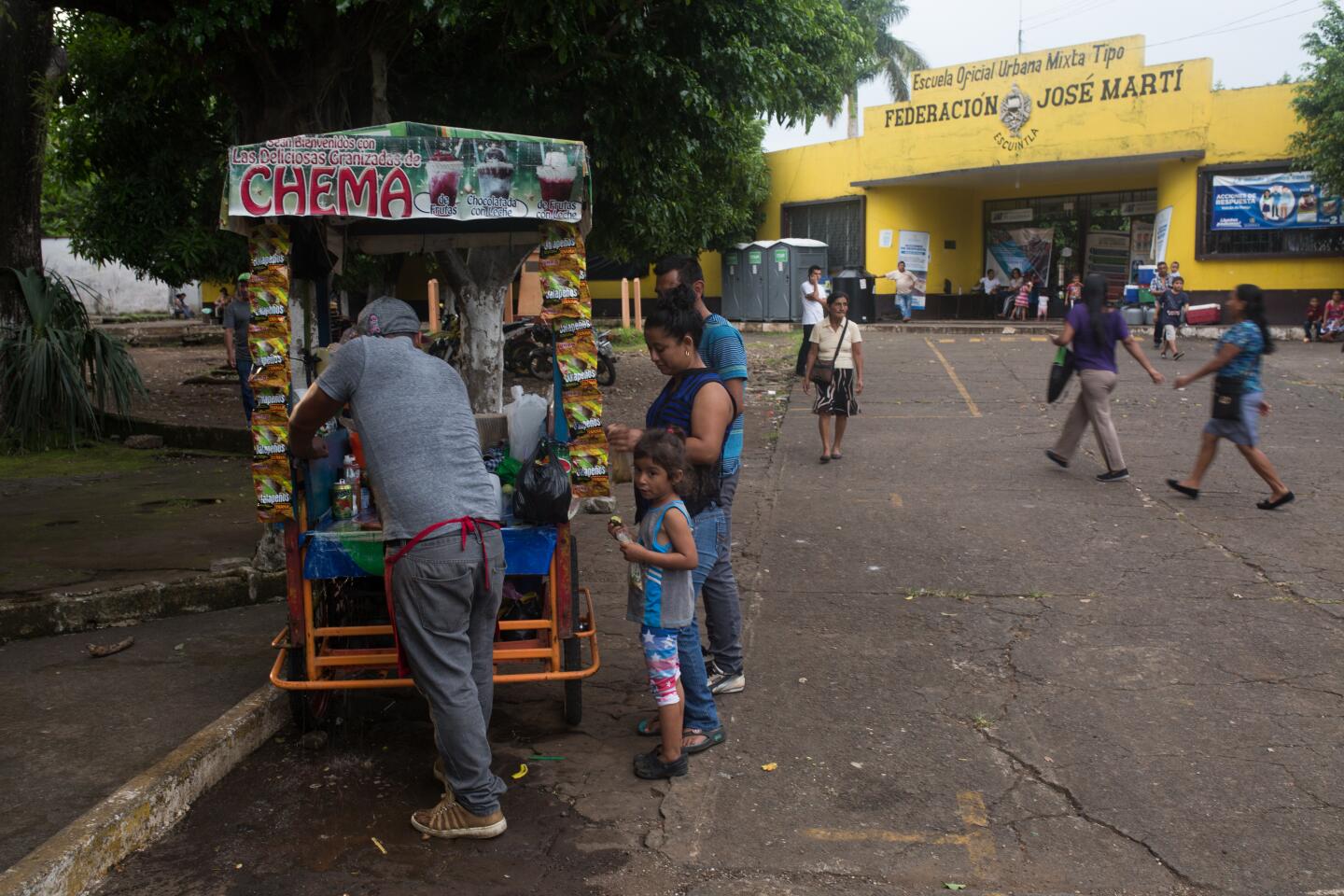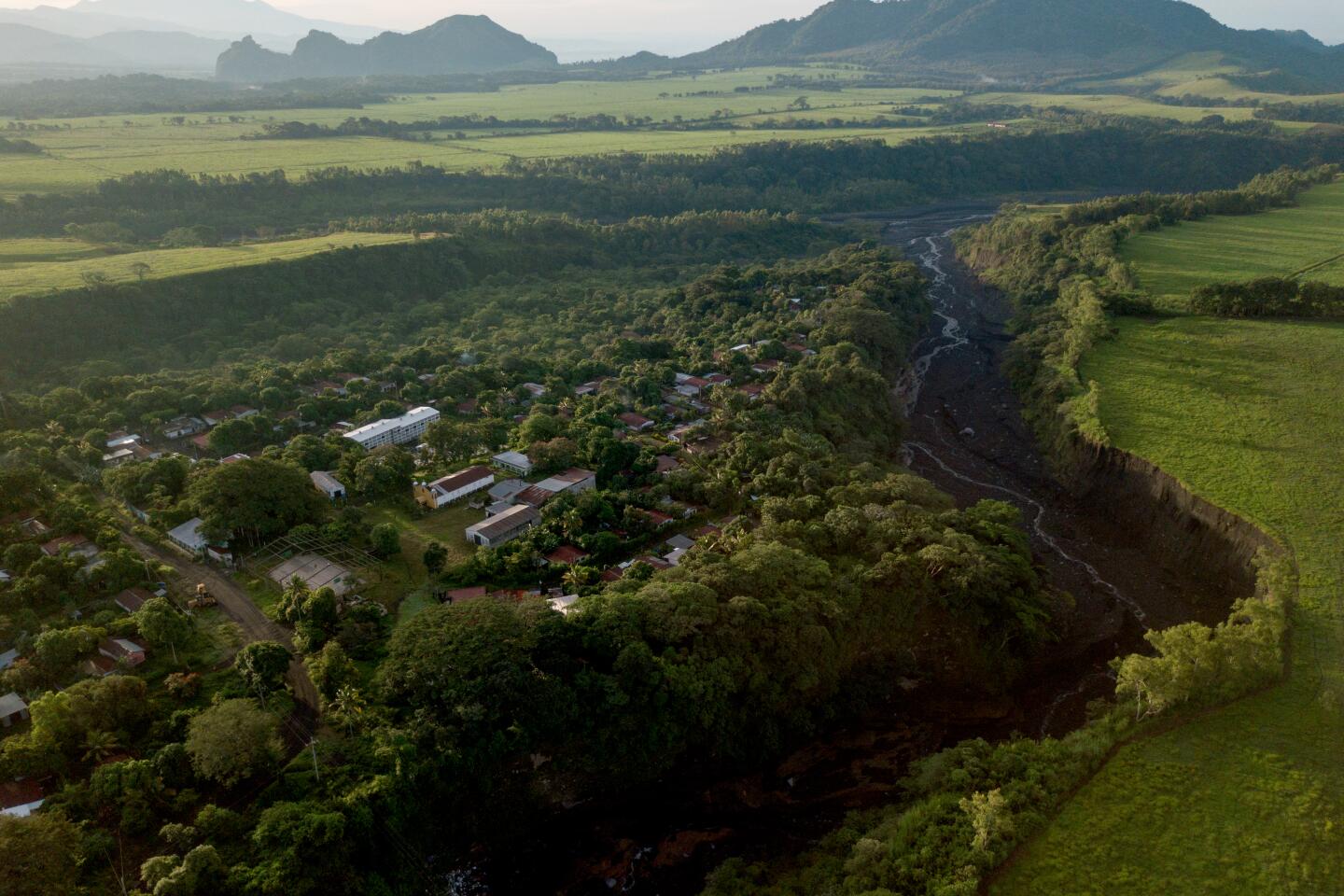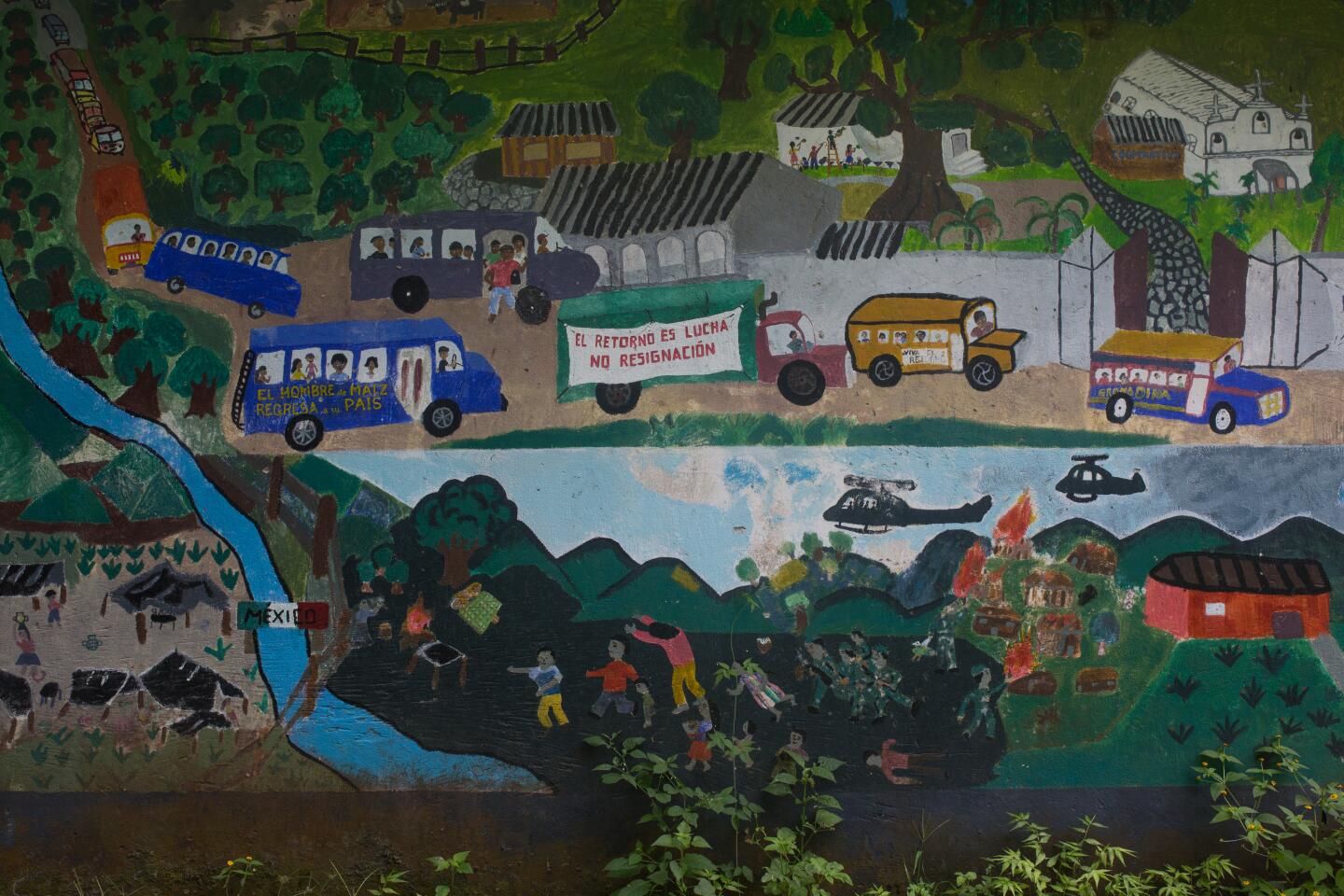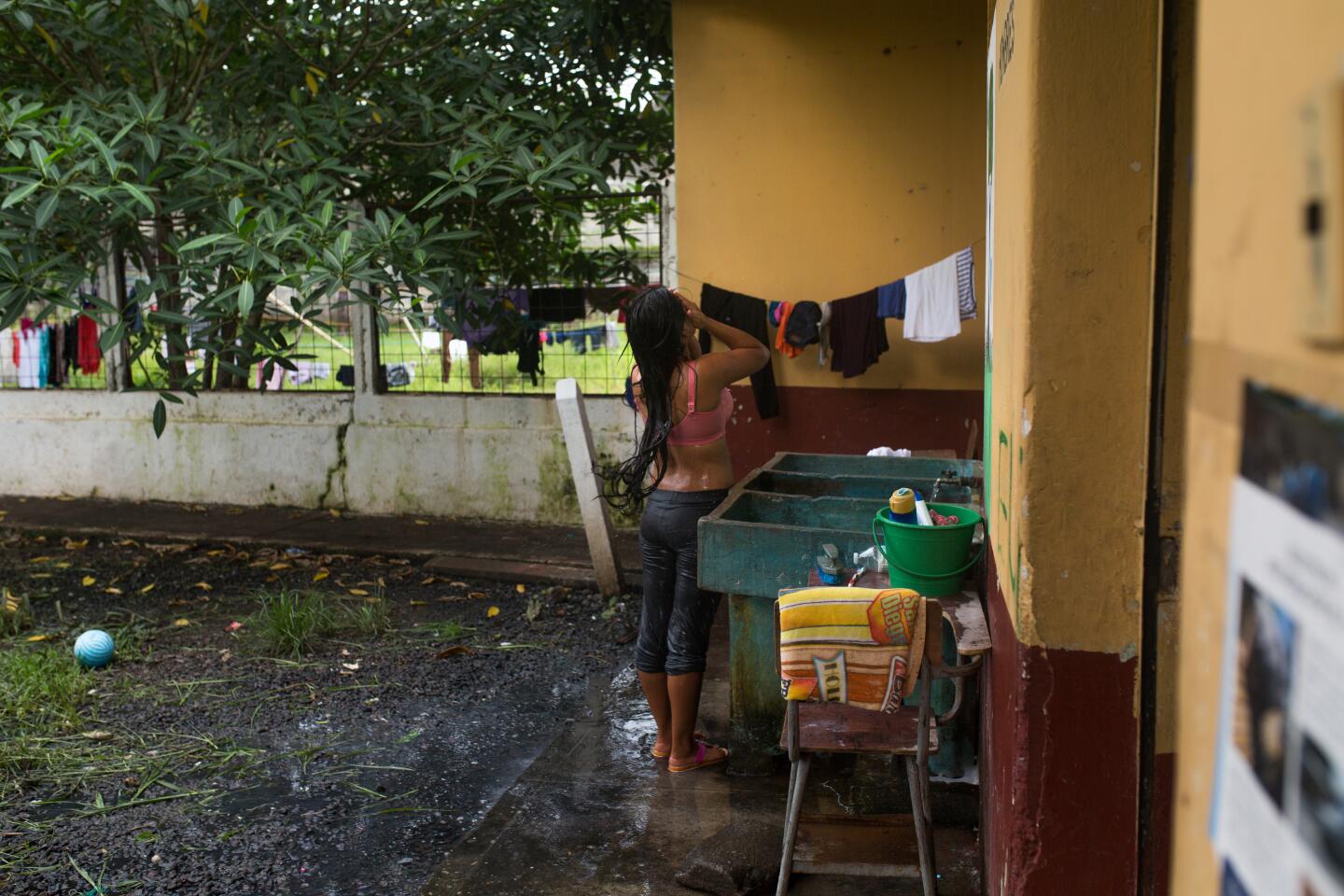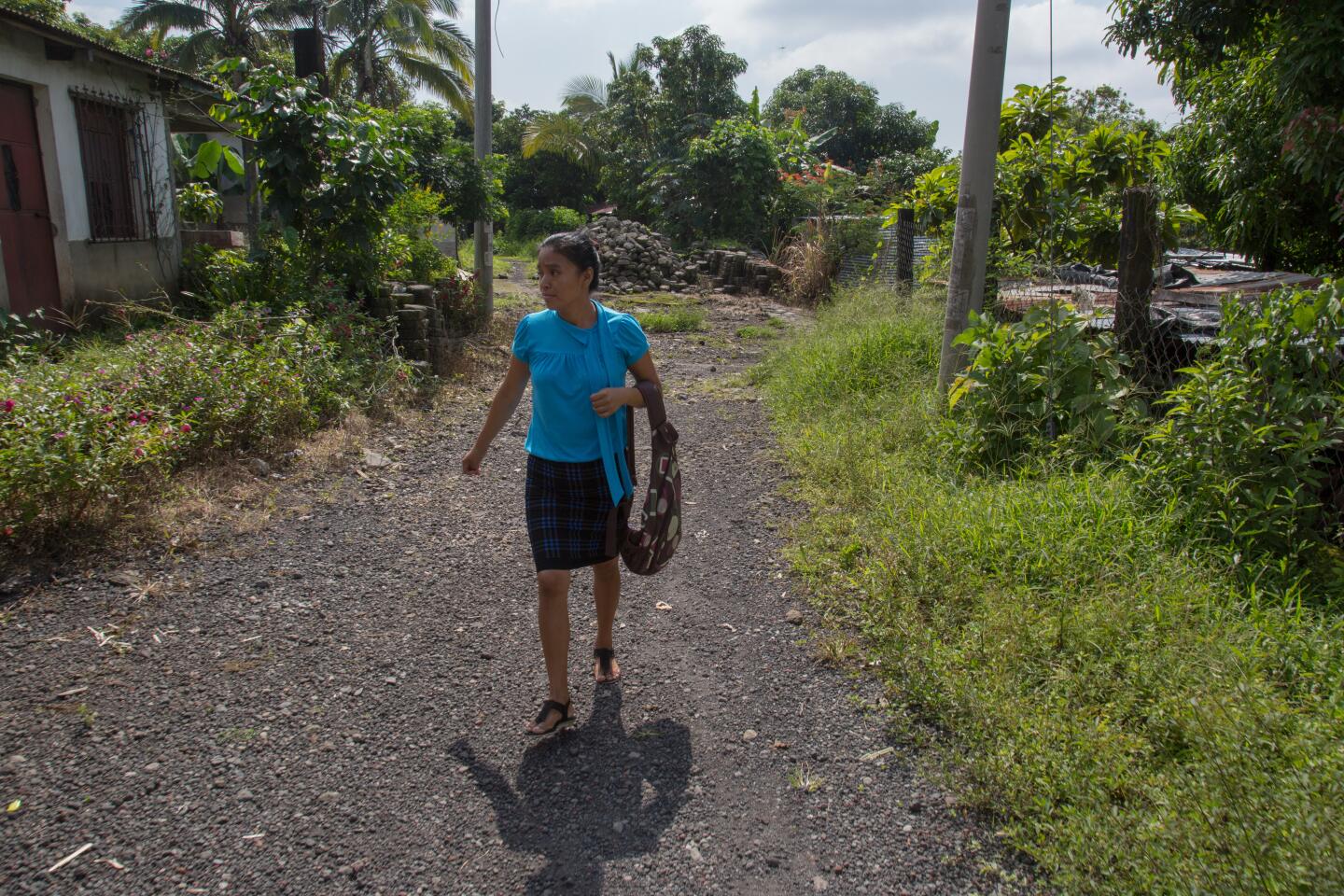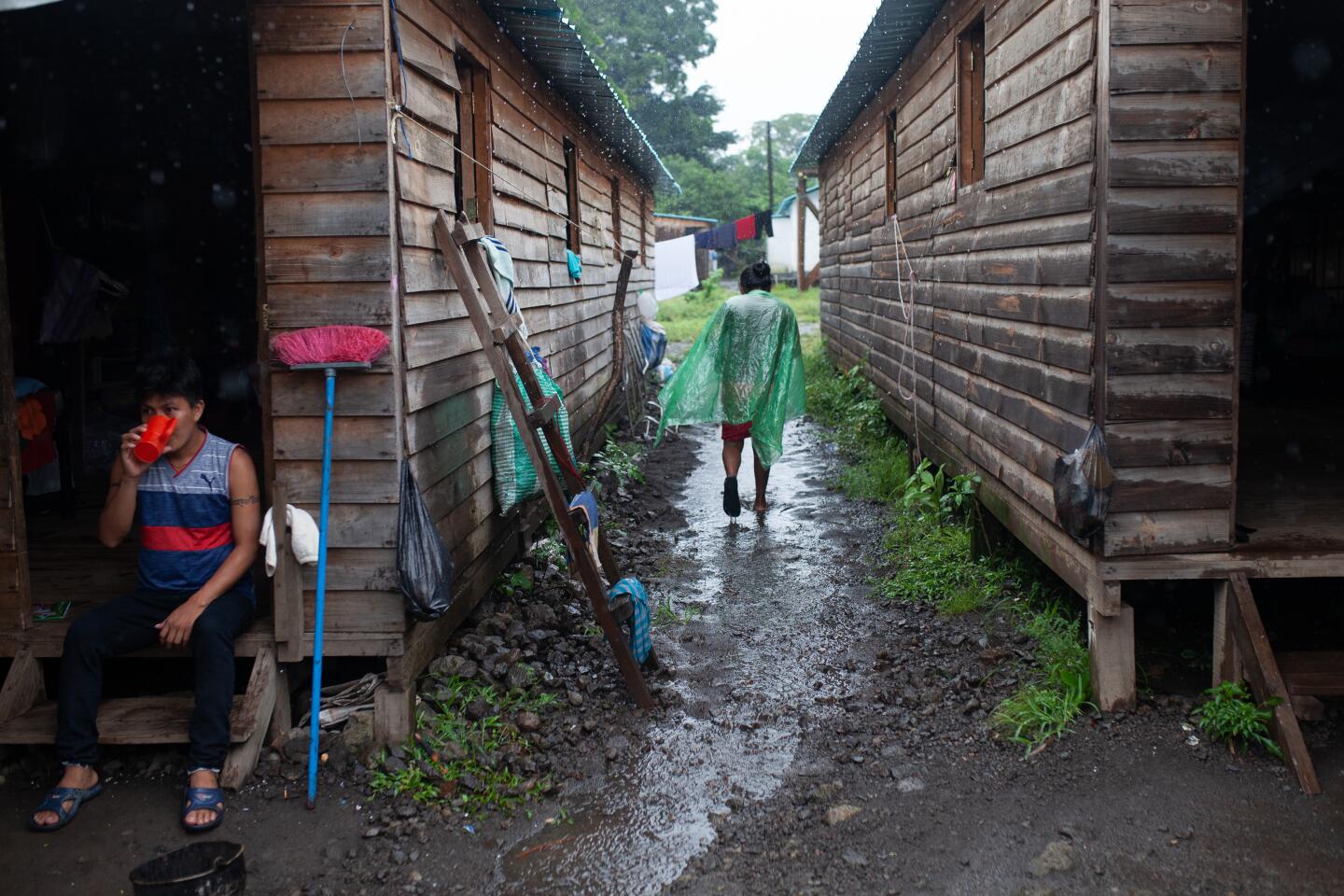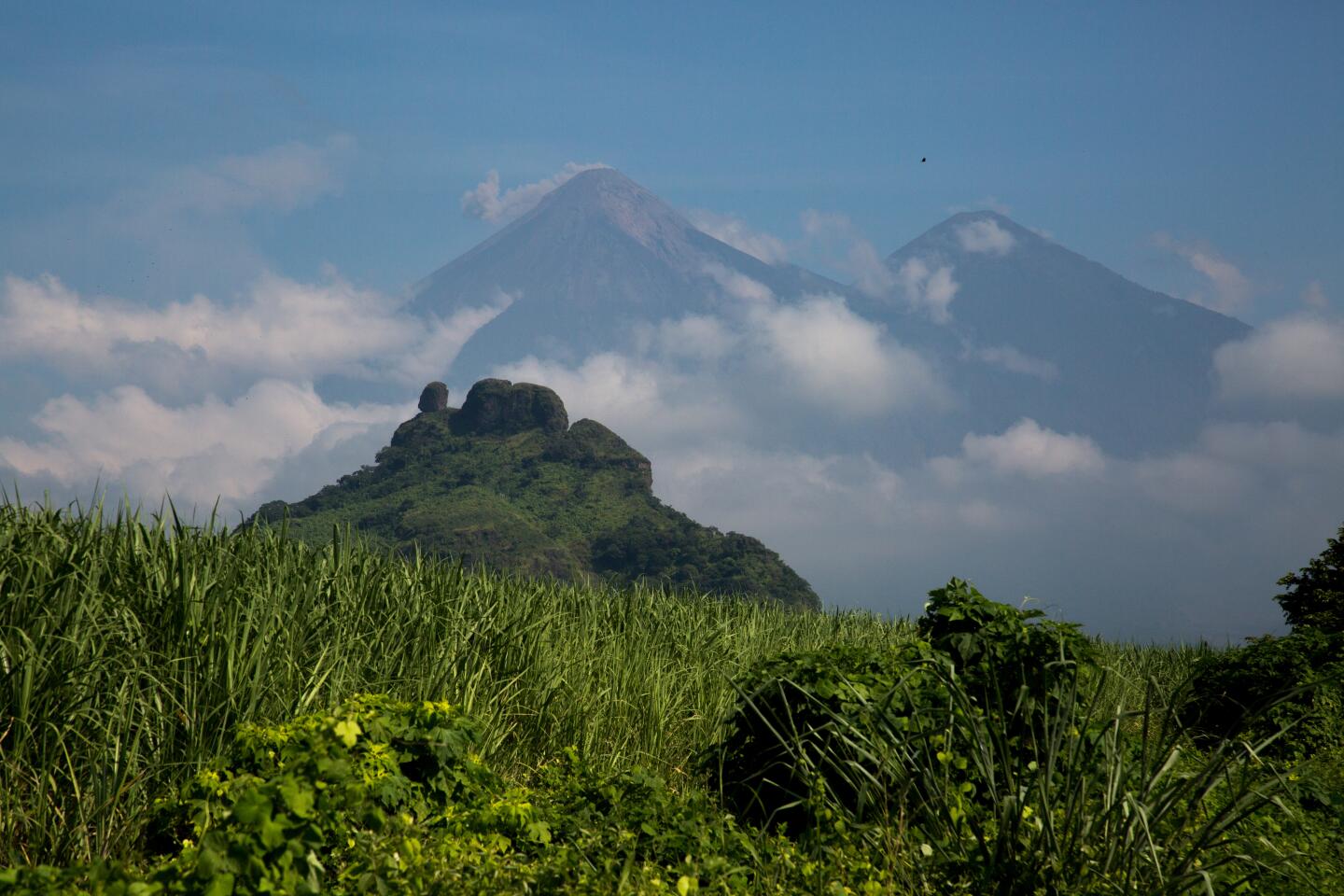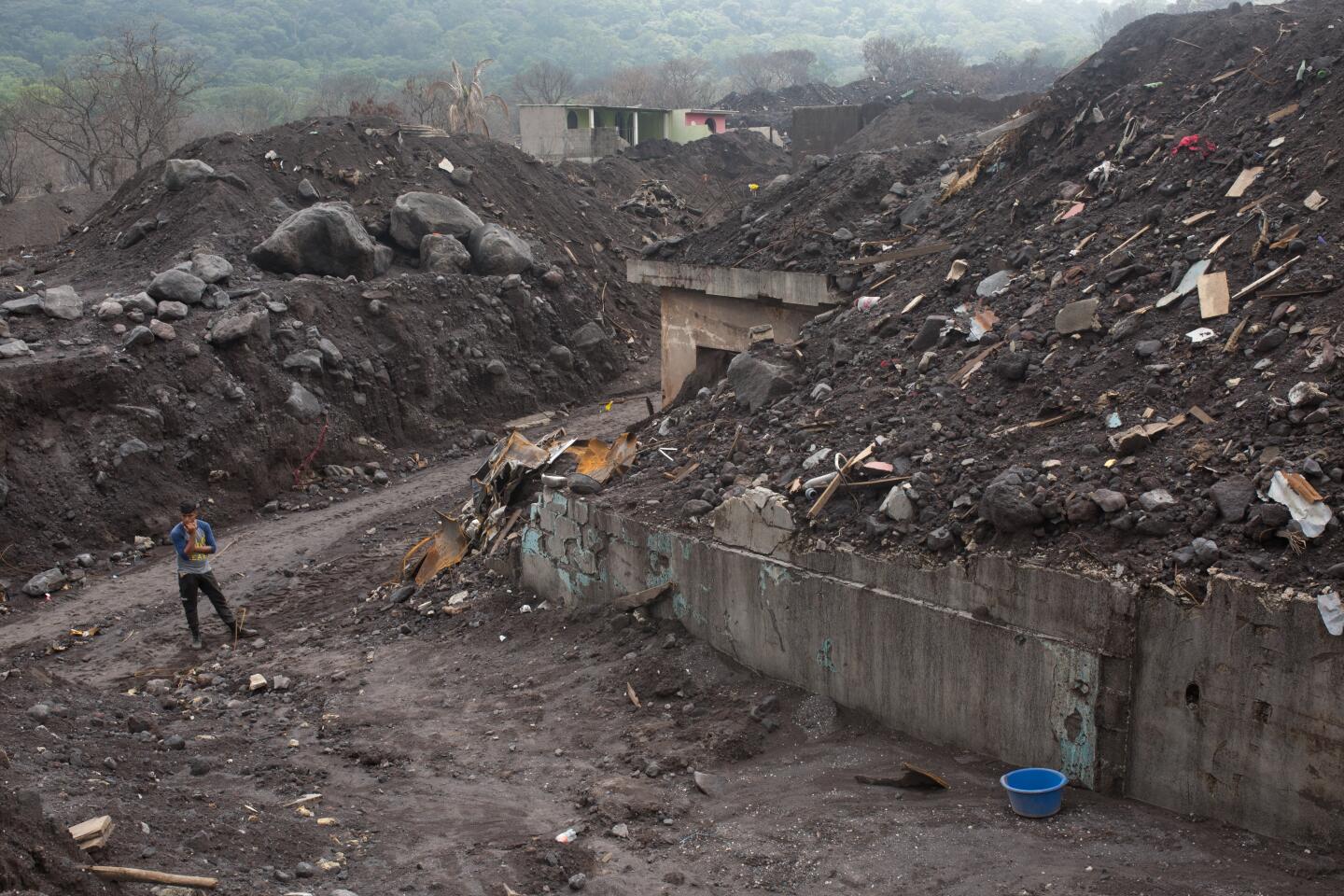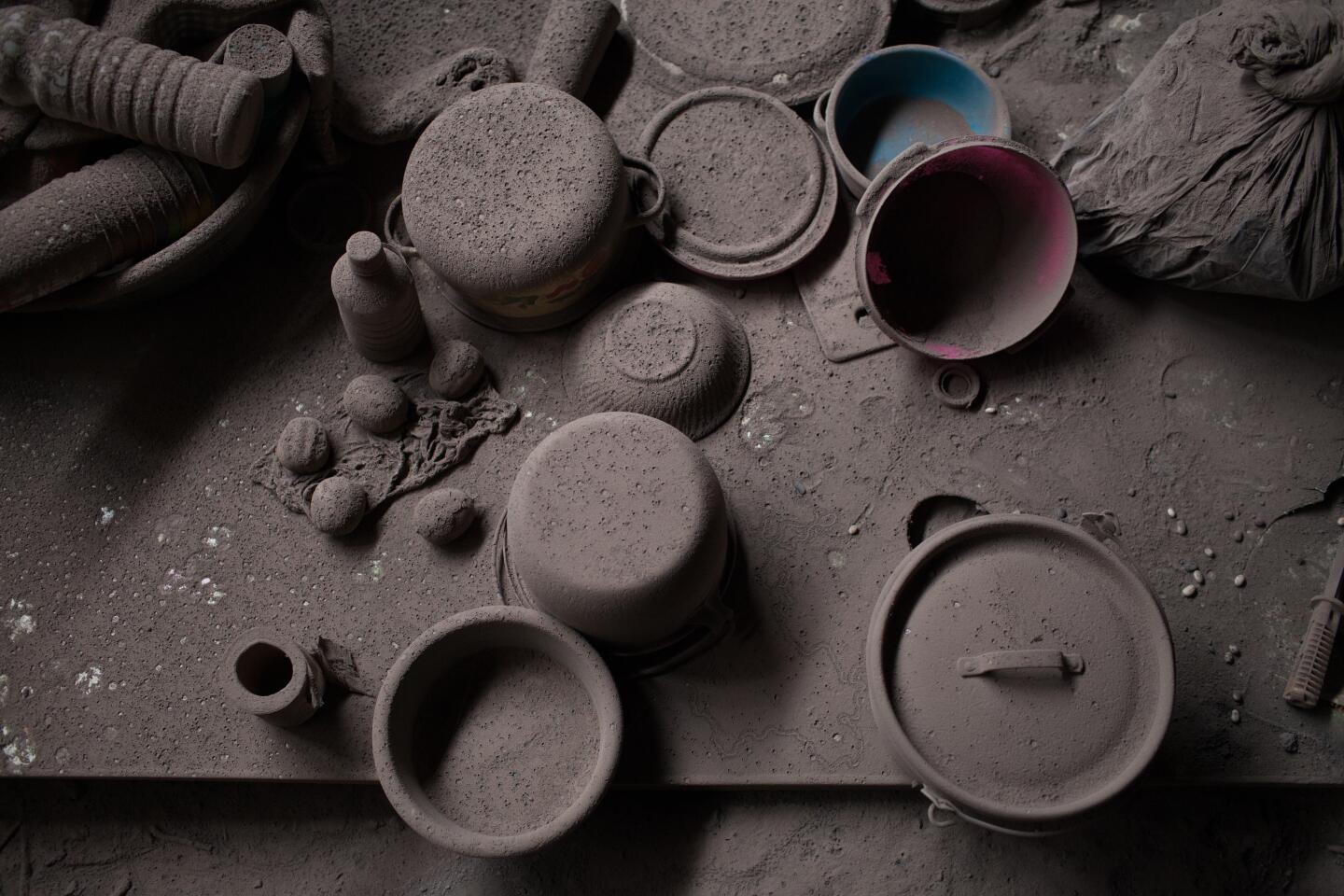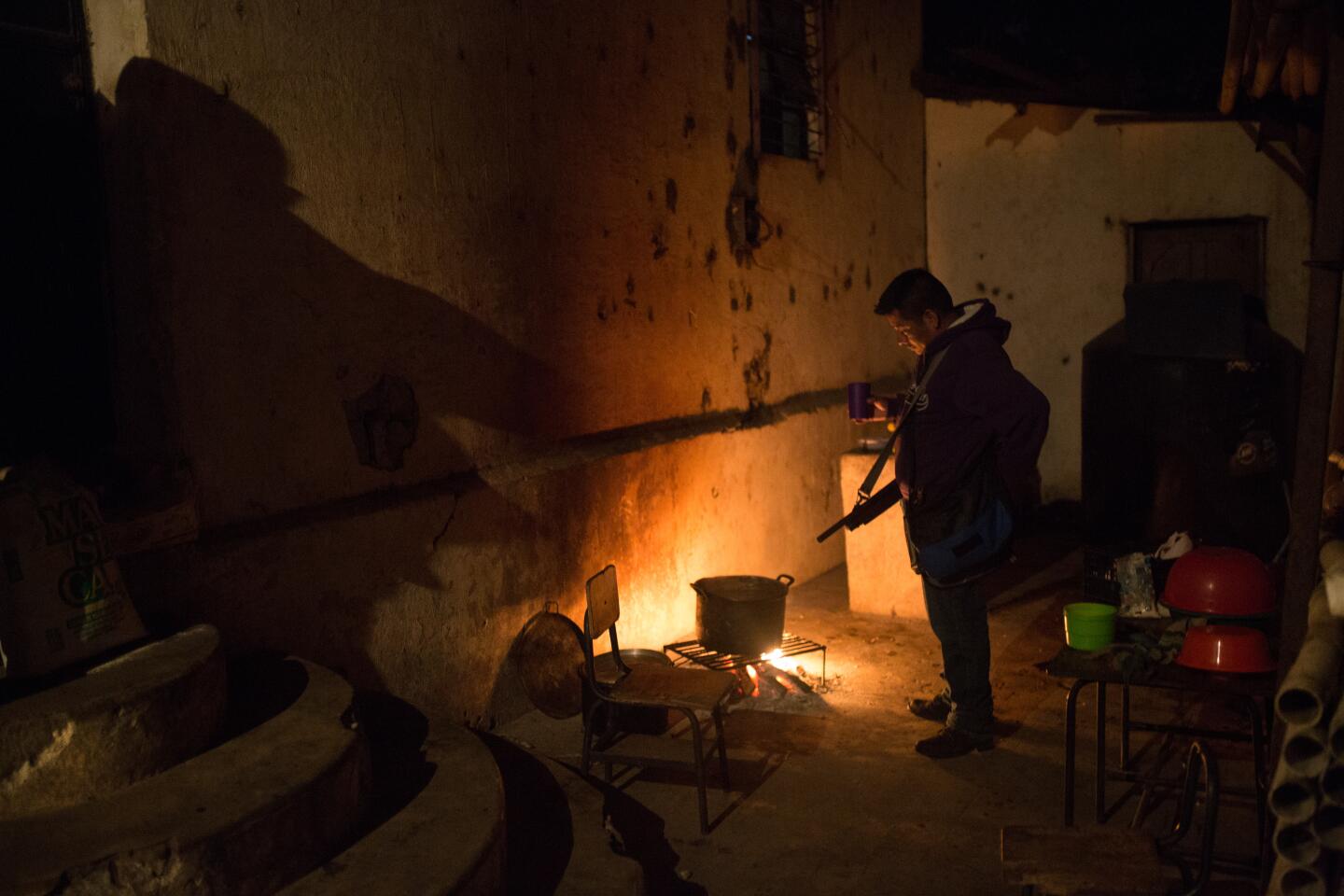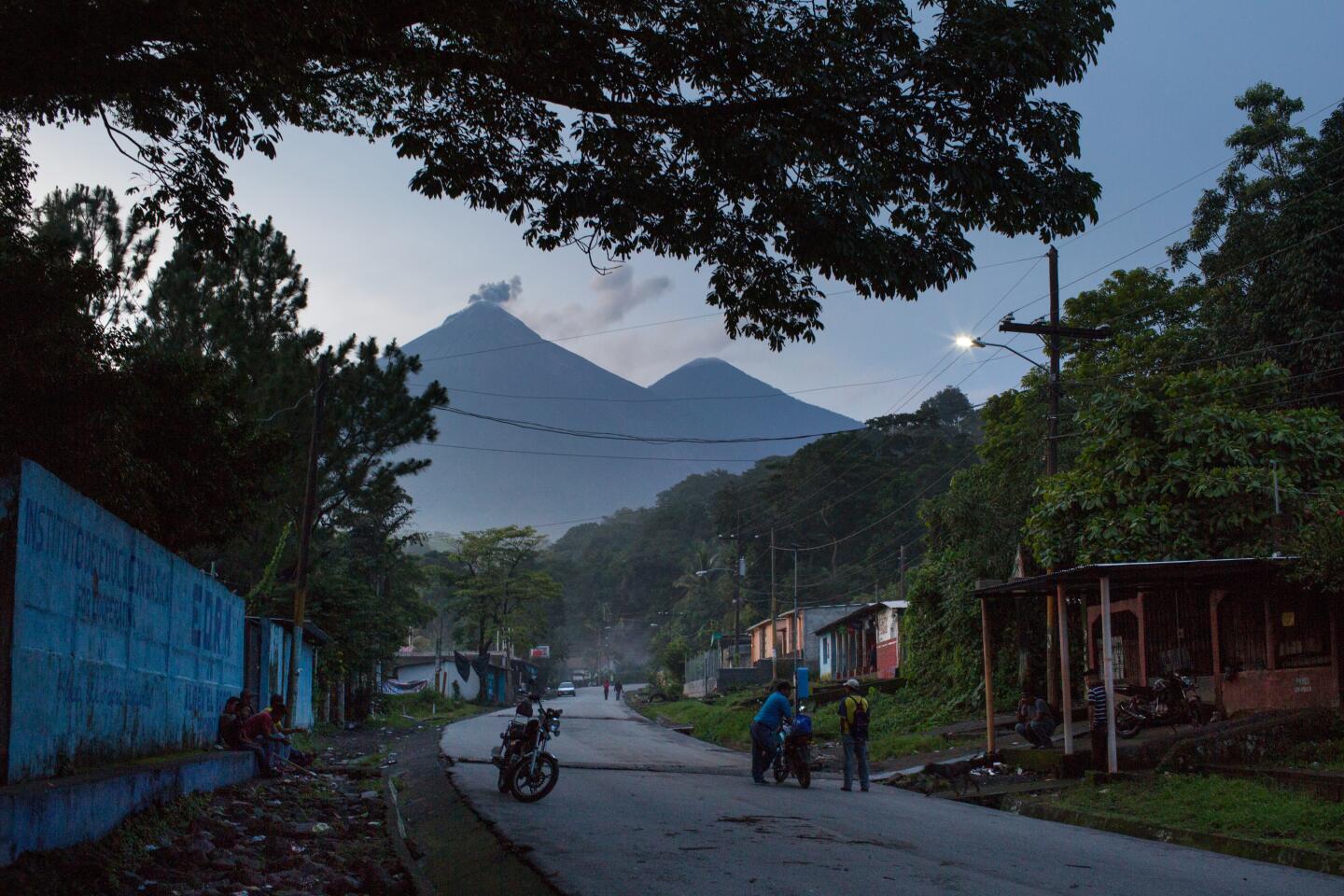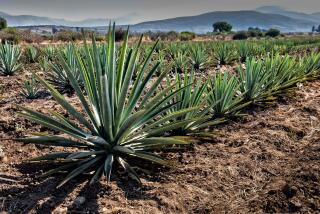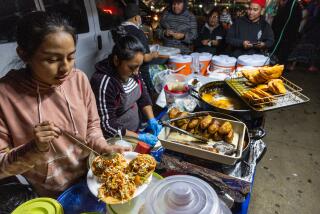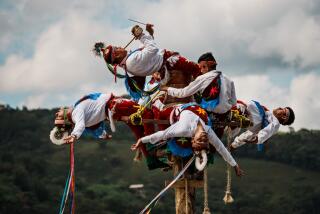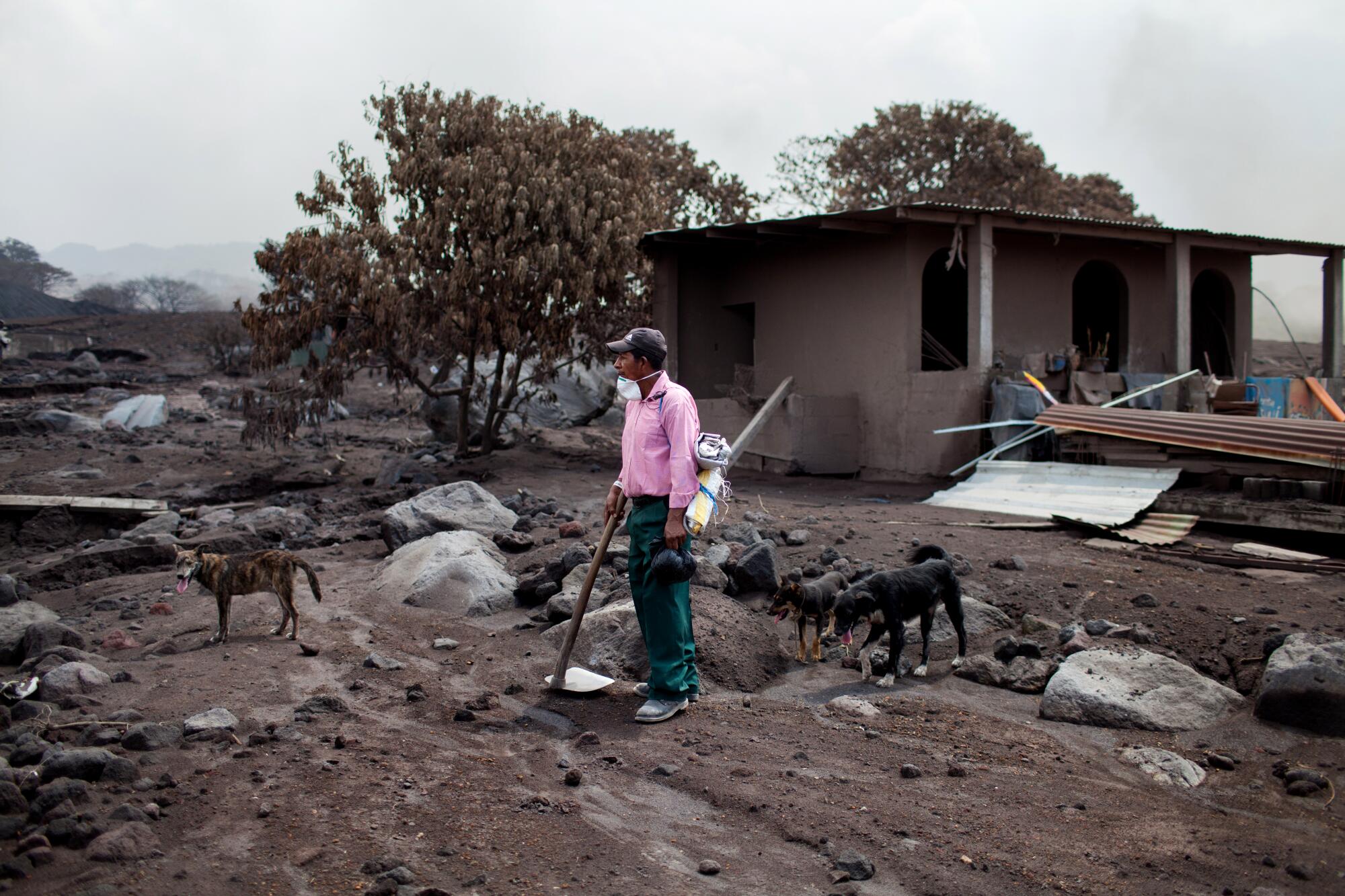
An indigenous community survived Guatemala’s civil war. But a volcanic eruption is forcing them out of a town that had symbolized their resilience and grit.
For more than 20 years, a mural has reminded a couple of hundred families here of their forced exile into Mexico after near extermination at the hands of the Guatemalan military during a bloody civil war. The colorful images painted by schoolchildren tell a story of tragedy, but also resilience and unity.
First, it depicts indigenous families tending crops in the western Guatemalan highlands. The second panel shows men in military garb, armed with rifles, standing over a man bleeding from his stomach. Helicopters hover in the sky and the village below is on fire. Children scatter. The scene is followed by a map of southern Mexico, where the families fled.
The last image shows their return in red, blue and yellow buses and their new home named after the day they arrived here in 1998, a date they incorporated into the name of their town: 15 de Octubre La Trinidad.
For years, the week of Oct. 15 was a time to celebrate renewal and community. Townspeople crowned a queen. They slaughtered their fattest hens. They danced to banda and marimba music. But this year there were no festivities, and the mural explains why. The last panel shows men and women tending coffee plants and children at play. But also prominent is the Volcano of Fire, belching black smoke into a blue sky.
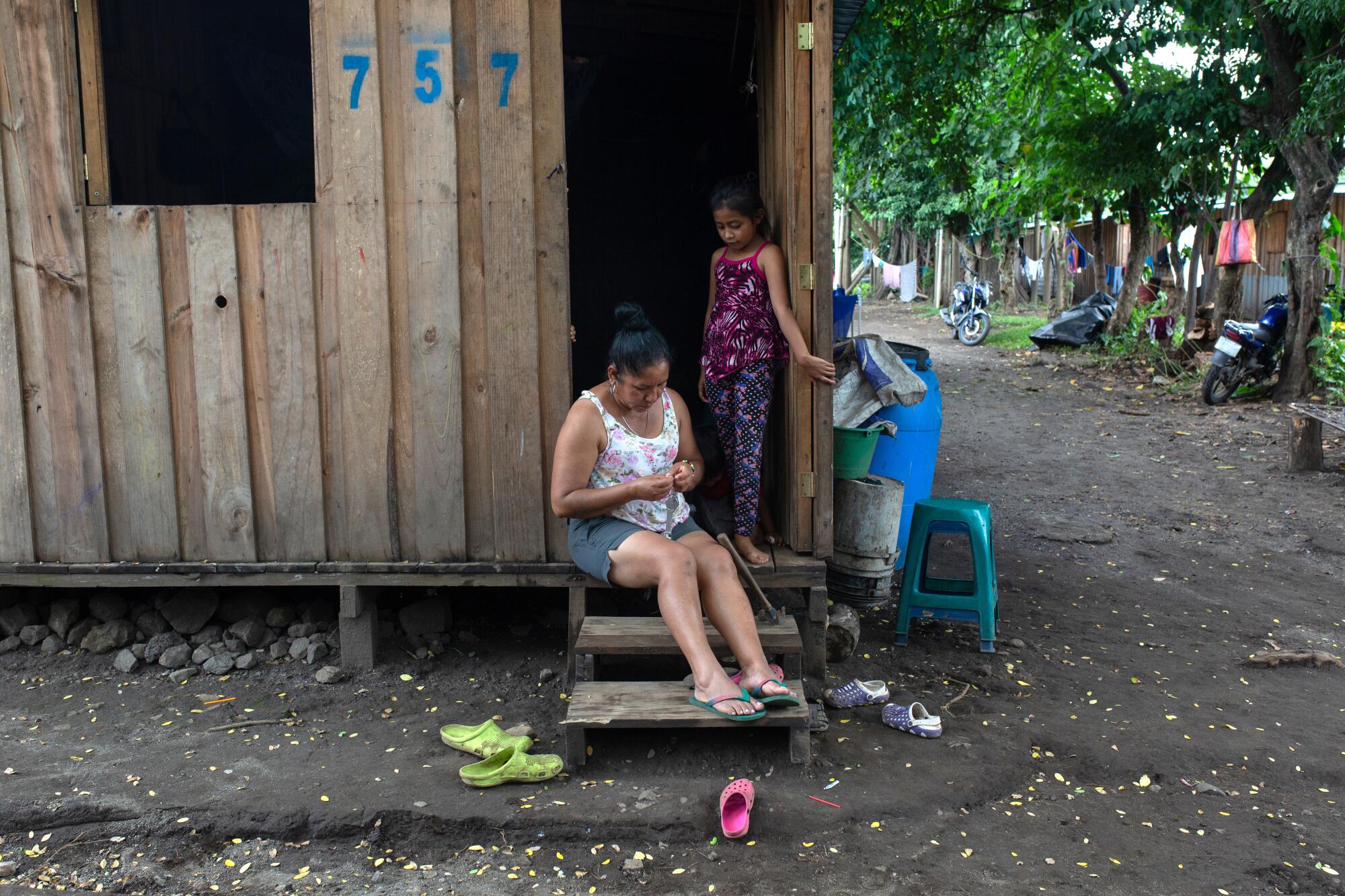
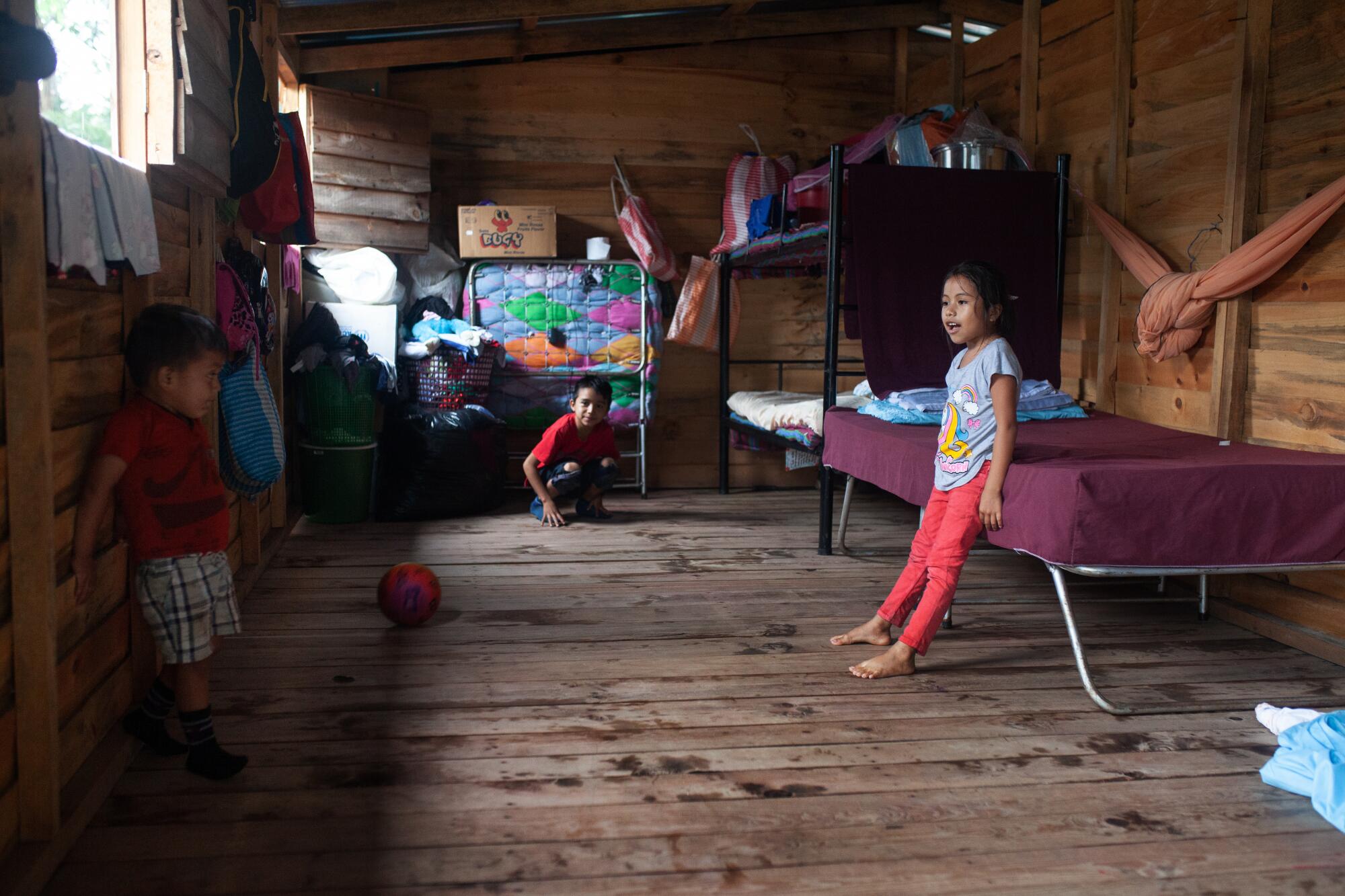
On June 3, 2018, Otilia Garcia Montejo, who leads the community’s council, was about to book the band for the 20th anniversary celebrations when the volcano erupted. The explosion eclipsed the sky with a towering cloud of ash. Molten rock shot into the air. The volcano drowned neighboring villages in a hellish trifecta of lava, rock and ash.
In La Trinidad, Garcia Montejo handed out masks to filter out the strong smell of sulphur. People cried and huddled in the Catholic church for shelter.
“We all felt so vulnerable,” Garcia Montejo recalled. “We tried to evacuate people, but some didn’t want to leave.... It was a difficult day.”
The Guatemalan government says at least 190 people died. Local organizations say thousands are still missing.
La Trinidad is intact but red-tagged. The government officially designated the village a high-risk area because rains could trigger flows of mud and ash. The volcano remains active.
So last month, a time when they would normally celebrate their unity and survival amid disasters both natural and man-made, the residents were divided. Garcia Montejo and about 80 other families, about a third of the town’s residents, defected from La Trinidad.
The families signed an agreement with the government to officially break away from the community in exchange for small concrete tract homes in La Industria, a suburban neighborhood in Escuintla, a municipality about 45 miles southwest of Guatemala City.

Otilia Garcia Montejo and 80 other families signed an agreement with the government to officially break away from the community in exchange for small concrete tract homes in La Industria, a suburban neighborhood in Escuintla, a municipality about 45 60 miles southwest of Guatemala City.
Other La Trinidad residents still hope the Guatemalan government will help them settle in a rural area called Finca El Prado, more than 3,000 acres of undeveloped land roughly 60 miles away from La Trinidad. Garcia Montejo sees no hope in such plans, and wearies at the thought of rebuilding the community once more.
“If we got that land, we’d have to start over like we did 20 years ago in Trinidad. We had no plumbing. No house,” Garcia Montejo said. “It’s too difficult to start over again. So we thank God for the opportunity to actually have our own house.”
Meanwhile, other community leaders are negotiating with the government, demanding that it help them buy Finca El Prado, where they can live off the land — as they have done for generations.
Otilia Gonzalez is among those fighting for a plot of land. She’s used to communal life — tending her chickens and livestock, growing her own food — and never had much proper schooling.
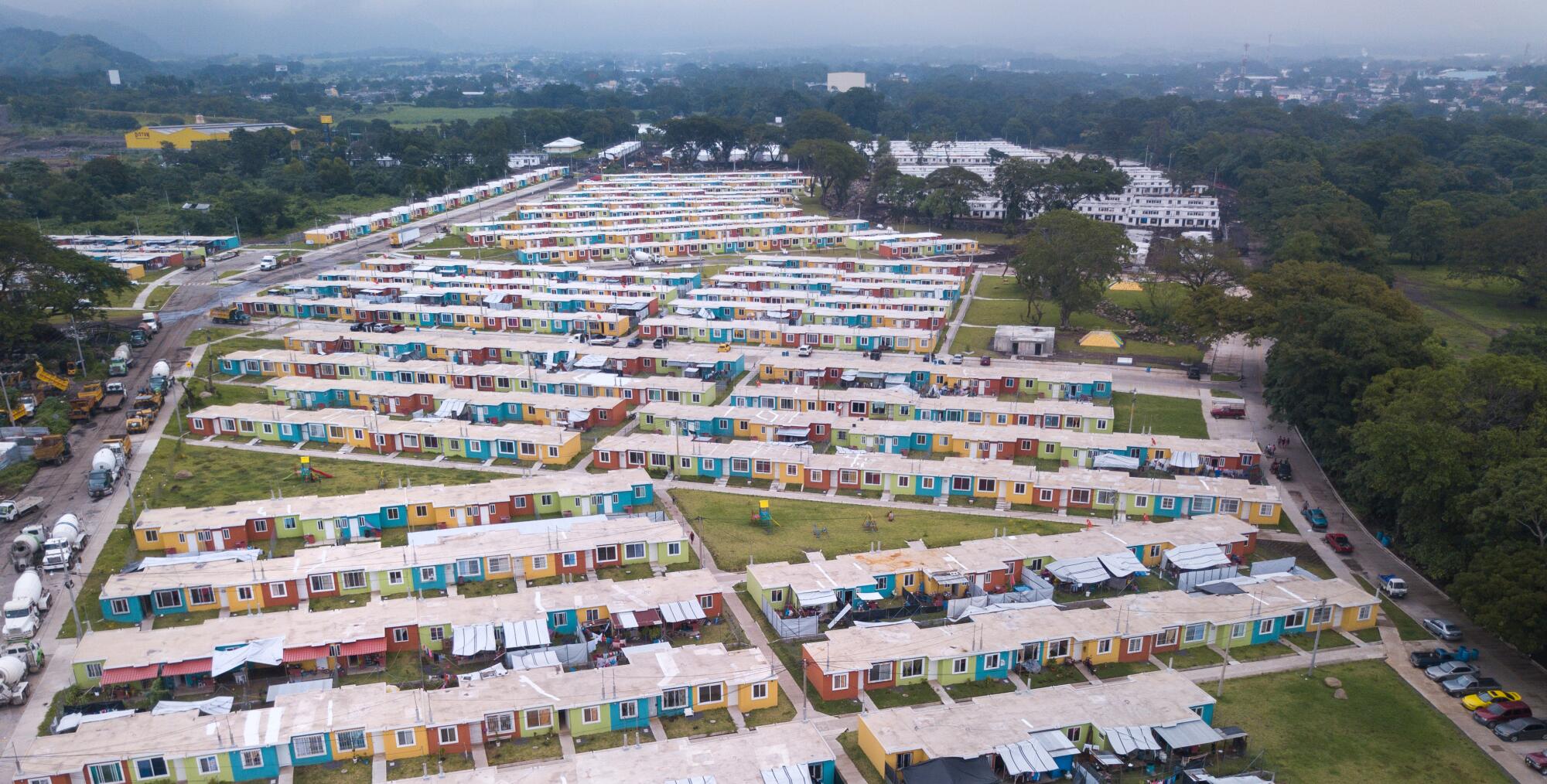
“If I took one of those houses, who would give me a job in the city?” she asked. “Nobody. How would I feed my family? There is no land there to grow food.”
The community has been uprooted before. She’s packed up many times before.
“This is history repeating itself,” Gonzalez tells herself in her darkest moments. “It’s the same story.”
Gonzalez hails from a community of indigenous farmworkers, ethnic Mayas who speak Popti and Mam, who fled their homes in the western highlands during the civil war that roiled Guatemala in the 1980s. The volcano is their latest misfortune.


Some chalk up their troubles to corrupt and inept government officials. Others believe they are cursed and must have wronged God in some way.
One day in the 1980s, as the Guatemalan military closed in, residents in the community of about 200 families — including Gonzalez’s and Garcia Montejo’s families — fled their homes in Huehuetenango. The region was believed to be a stronghold of the rebellion at the time. The community took refuge in neighboring Chiapas, Mexico. The families thought their stay would last a few months. The exile stretched on for more than 15 years.
The families were destitute, relying on the charity of others, such as landowners, for survival. Every few years, generosity would run out and the families would be forced to seek out another plot of land in Chiapas.
“Pack up your things,” Gonzalez’s mother would tell her children. “We have to move.”
“But we don’t want to leave,” Gonzalez would reply. “I’m used to living here. Why can’t we stay? When will we be able to return?”
They relocated at least four times.
“It would just tear my heart out every time we had to move,” Gonzalez said.
Two years after the 1996 Guatemalan peace accords, which ended the civil war, the exiles returned to their homeland, and the government placed the surviving families on the southern slope of the Volcano of Fire.
Community leaders said they wouldn’t discover until later that the volcano remained a threat. It made the land fertile and they built a successful coffee cooperative from the ground up.
Though not wealthy, the community members earned enough to lead simple and good lives. Many tended the fields, grew their own food and raised their own livestock.
Compared with other towns, La Trinidad was spared the brunt of the volcano’s wrath, but much of the coffee crops were buried in deep ash. Government officials deemed the village uninhabitable, evacuating most of the residents and housing them in an empty school in Escuintla. Aid workers crammed cots, mattresses and bunk beds into damp classrooms and a stuffy gymnasium.
In December 2018, the families were relocated to a nearby temporary shelter in La Industria, next to a construction site for the tract homes the government has dubbed “dignified dwellings.” The busy site filled with the sounds of tractors, cranes and motors is a departure from the serene atmosphere of La Trinidad.
Back in La Trinidad on Oct. 15 — the traditional day of jubilation — Garcia Montejo and about 75 others attended a solemn Mass at the yellow church.
“This will be one of the last Masses I will attend here,” she said to herself.
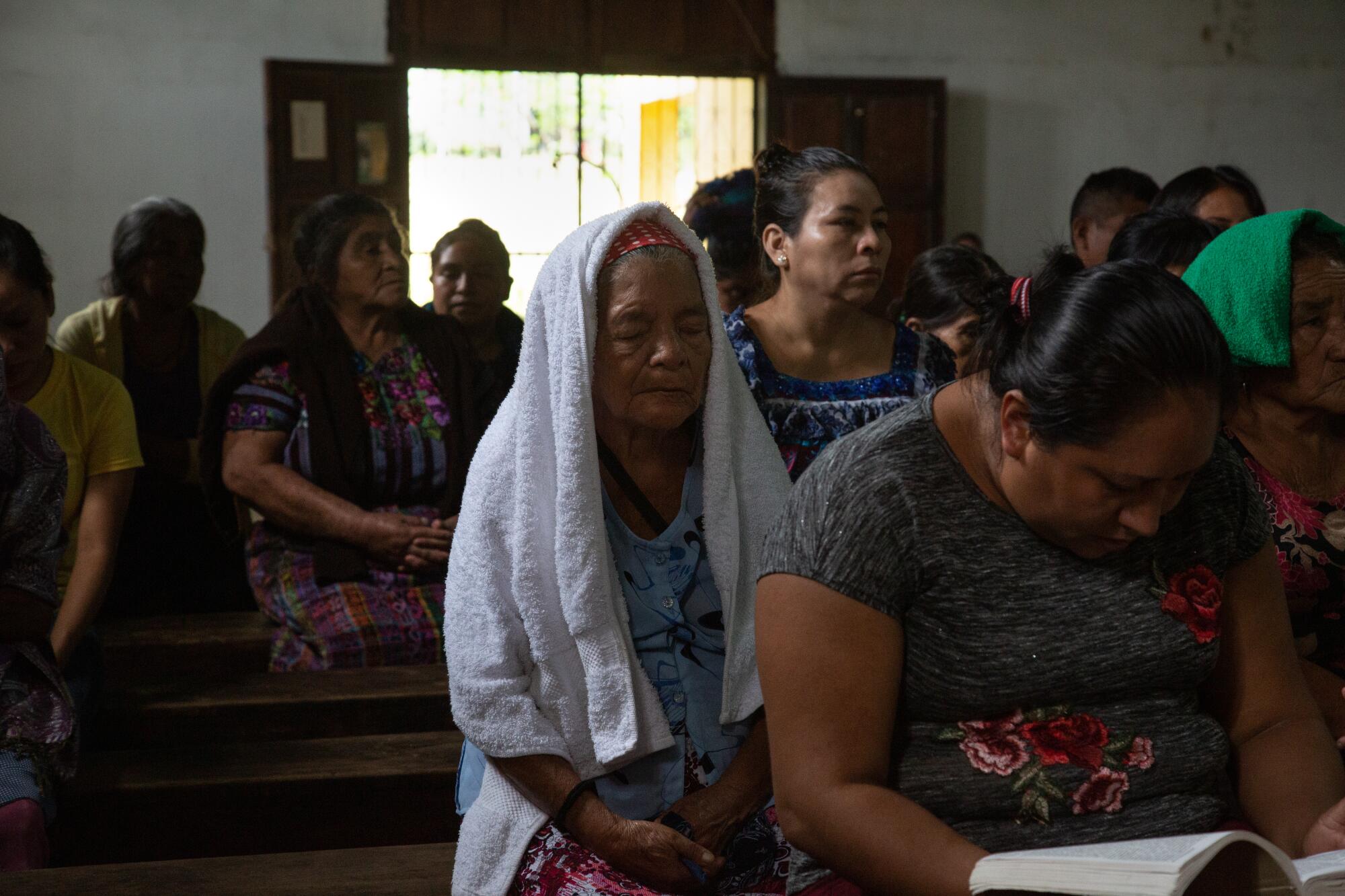
Many of the families spend half their time in the community despite the government’s warnings.
The volcano could blow at any time.
It was late morning. Garcia Montejo could hardly see the volcano; heavy clouds obscured the view.
The 44-year-old said she knew she was running a risk being in La Trinidad. She just pushed her worries to the side.
“It’s calm today,” she said, reassuring herself.
A few feet away, Gilberto Camposeco Jimenez, a 49-year-old community leader, and three other men threw bags full of wet coffee beans onto their backs. They hauled them into an industrial-sized coffee dryer. The clanking of the machine was music to his ears. They’d been able to salvage some of the harvest this year thanks to the community’s long tradition of organizing.
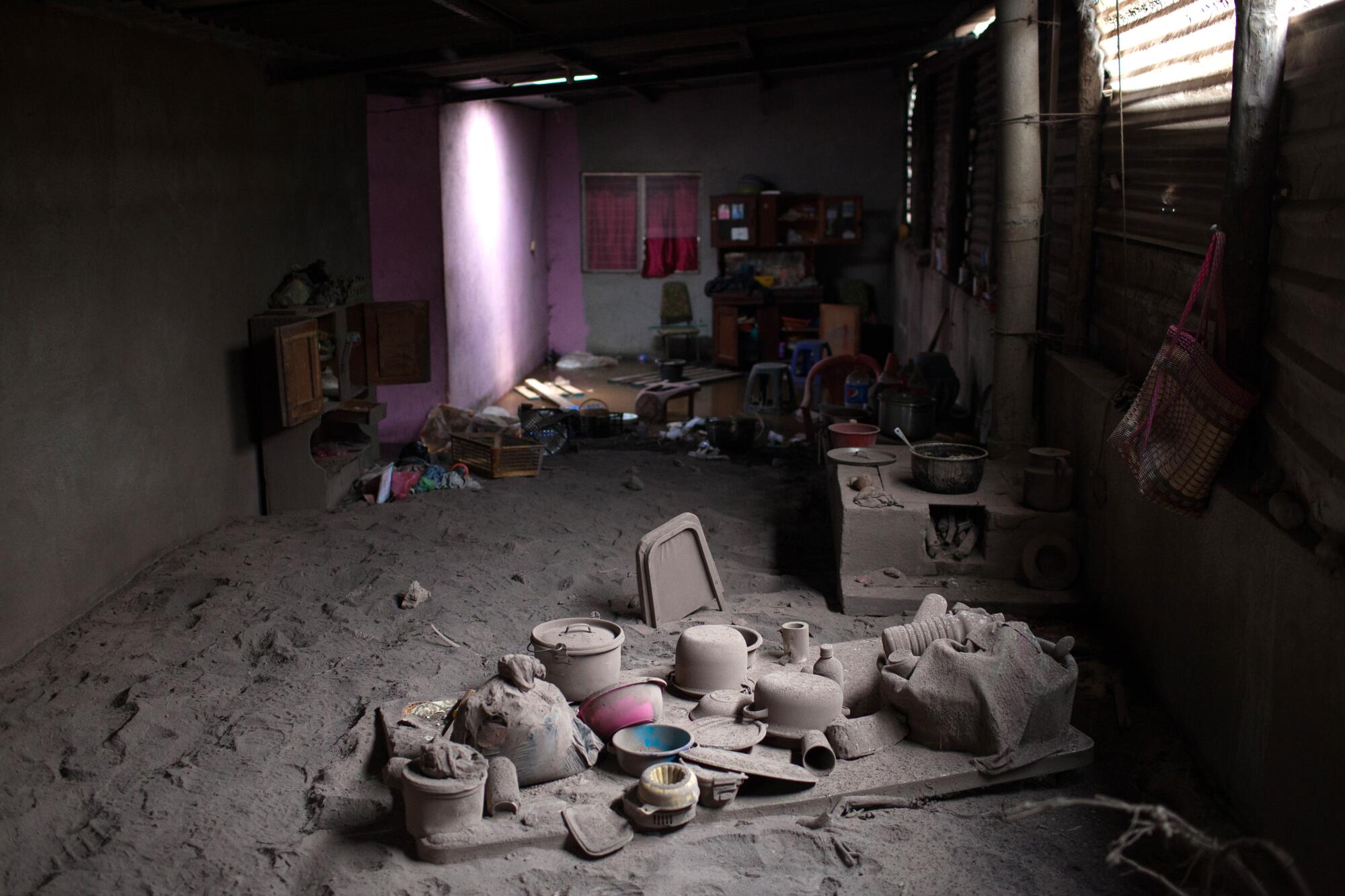
“It feels good to be here, working the land,” said Camposeco Jimenez. He plans to stay and fight for Finca El Prado.
Just a few weeks after the 2018 explosion, Camposeco Jimenez and other community leaders organized in the shelters. They appointed a team of several dozen men who took turns traveling to La Trinidad to keep 24-hour watch on the community. They joined the 20 men who’d stayed behind to protect the homes, church and buildings storing coffee and equipment.
About a dozen men patrolled the rural area on foot. Homemade shotguns swung on their shoulders as they trudged up hills and across streams.
Camposeco Jimenez designated assignments.
“We learned to organize ourselves during the war,” he said. “We’ve kept this level of organizing with us, even when we went into exile in Mexico. Whenever a problem arose, we gathered to find a solution. That’s the way we’ve always had to live. We look out for each other.”
It was the only way they survived for so long before going into exile, he said. Camposeco Jimenez was 10 when he fled to Chiapas with his family.
“The enemy, the threat back then, was the military coming to kill us,” he remembered. “Now it’s the volcano.”
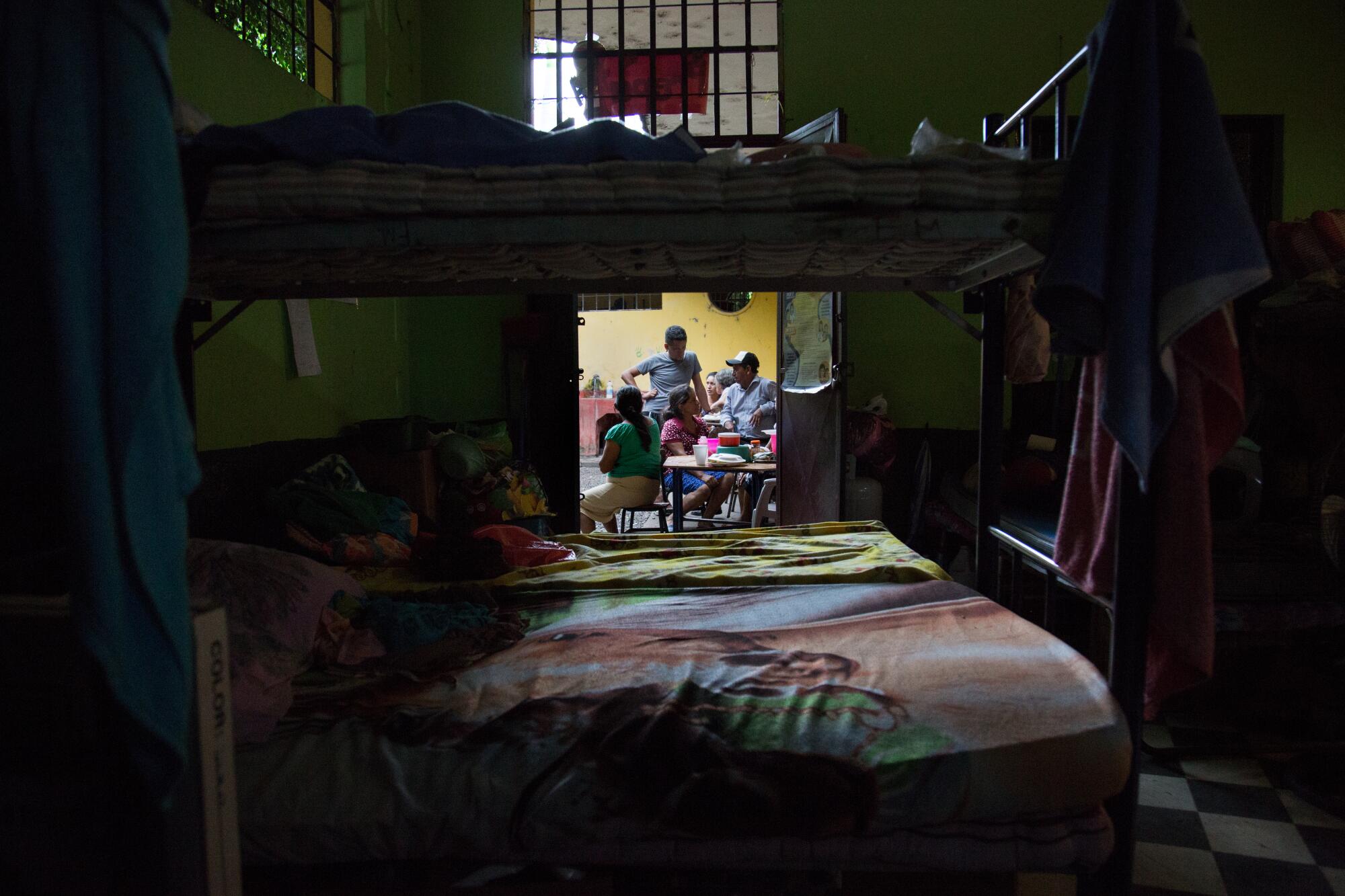
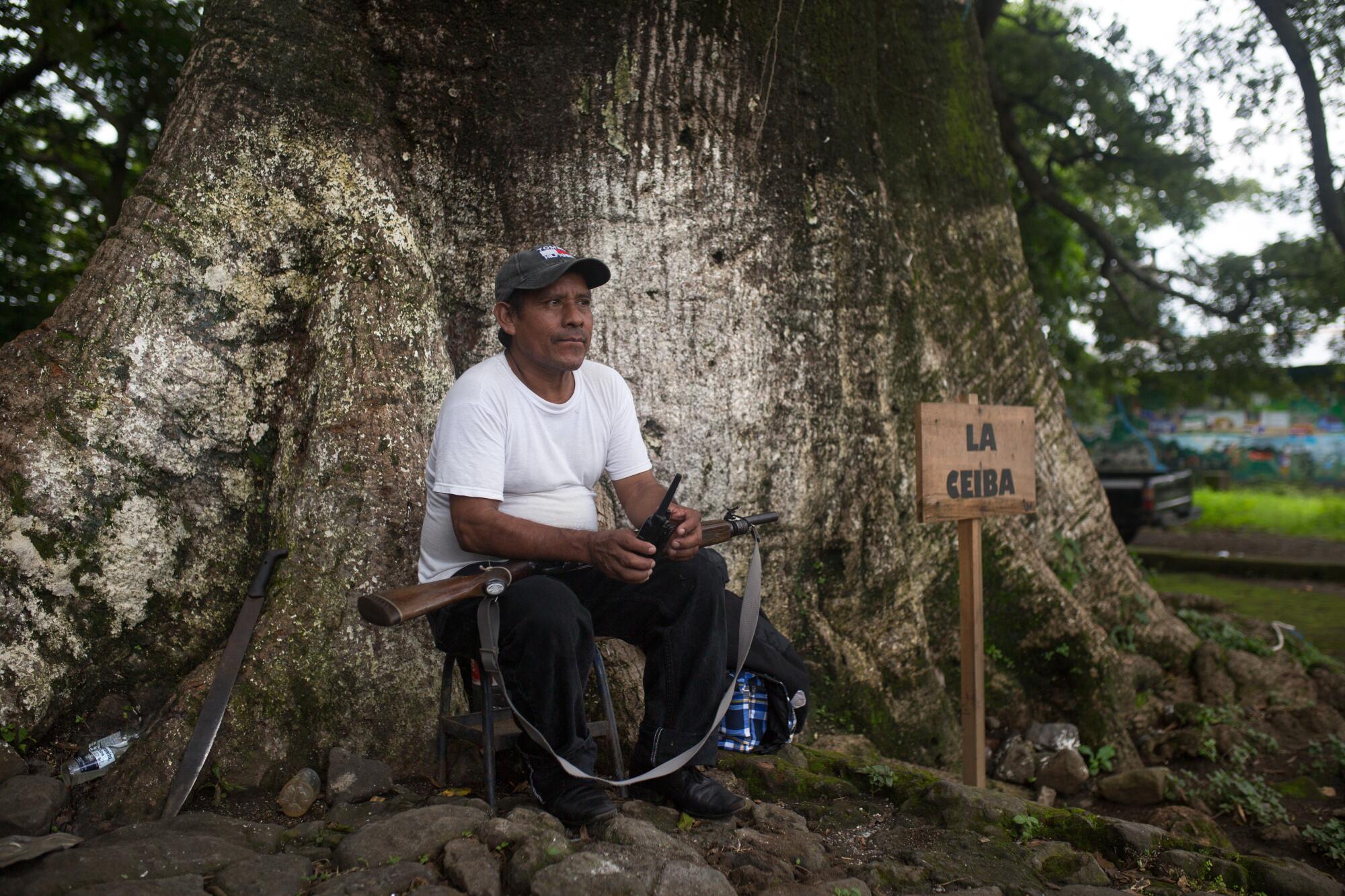
It’s unclear as to whether the Guatemalan government will agree to buy Finca El Prado. When the families do find a place to settle, they hope the government will give them more local autonomy and recognize them as an indigenous community. They’ve already shed 15 de Octubre La Trinidad for a new name — Comunidad Indigena.
Camposeco Jimenez’s brother, Guadalupe, who serves on the new community’s board, said establishing such a community is an important step in their quest to reclaim the culture, identity and customs they lost during their many years of displacement.
“I’m Jacalteco, but I can no longer speak my mother’s indigenous language of Popti,” he said. “We have lost so much.”
Last year, shortly after moving into the shelter in La Industria, the children painted a new mural — a continuation of the community’s history.
It begins with life before the volcano’s eruption — images of happy children playing soccer in La Trinidad. Corn and coffee plants grow tall. A pig roams freely.
The second image depicts a pyroclastic flow — a lethal mix of poisonous gas, rock, ash and lava — raging through villages.
The next panel shows the school in Escuintla, which served as the community’s first shelter, and the wooden shacks where they now live, near the tract homes under construction.
The final panel displays what the Comunidad Indigena hopes for the future: men, women and children planting and harvesting corn and bean crops on verdant, open land. A bird nests on a tree. The sun shines above. A volcano stands in the distance, far away.
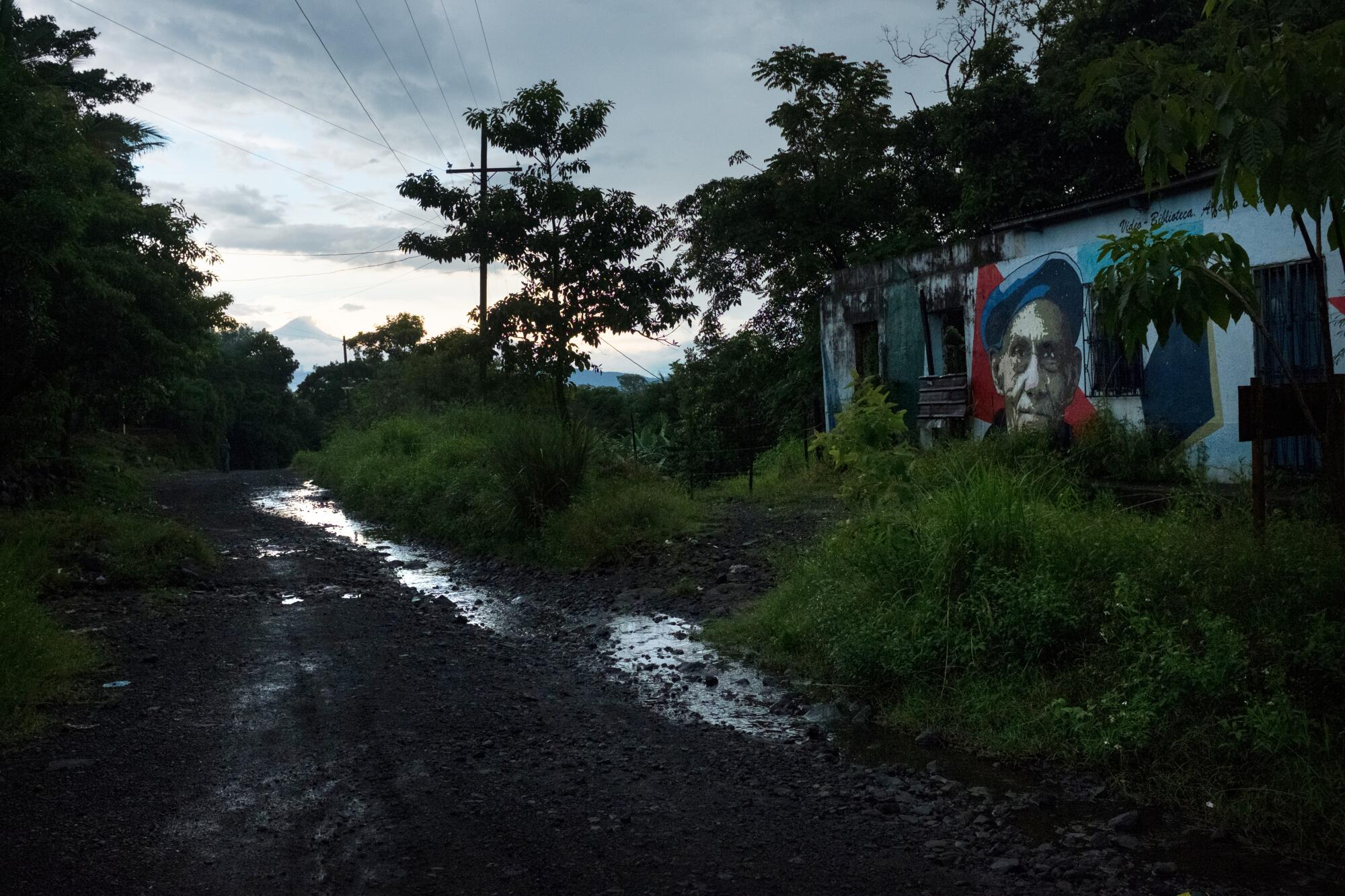
More to Read
Start your day right
Sign up for Essential California for news, features and recommendations from the L.A. Times and beyond in your inbox six days a week.
You may occasionally receive promotional content from the Los Angeles Times.
